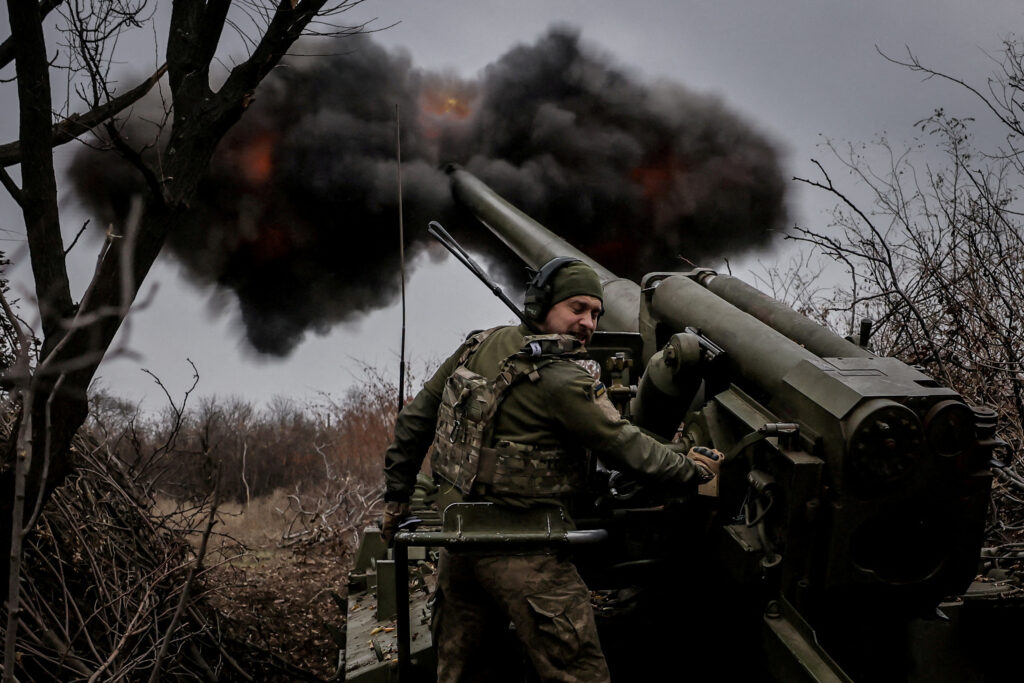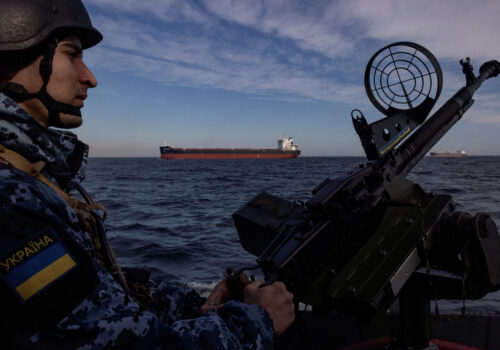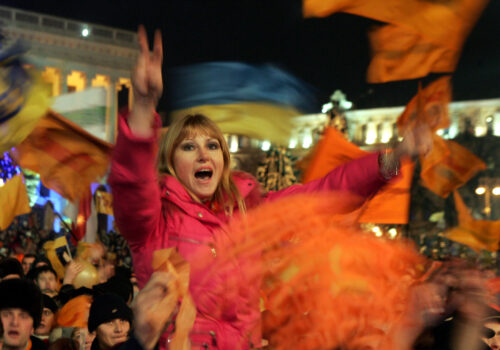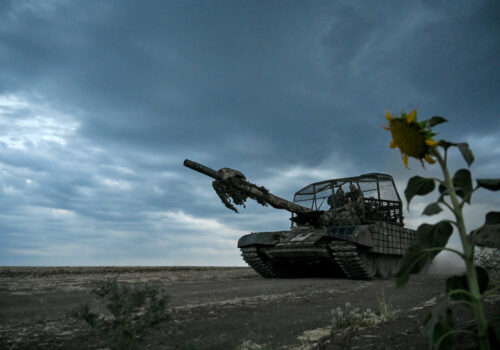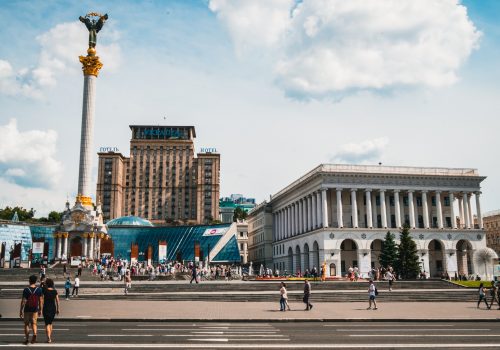As expectations mount over the prospect of fresh peace talks in 2025 to end Russia’s war in Ukraine, the idea of Ukraine’s possible Finlandization has once again resurfaced. Finnish officials have been quick to reject such suggestions, warning that forcing neutrality on Ukraine “will not bring about a peaceful solution to the crisis with Russia.”
The mood of skepticism in Helsinki is understandable. While there are some superficial similarities between the position Ukraine currently finds itself in and Finland’s predicament during the Cold War, any attempt to emulate the Finlandization policies of an earlier era would be disastrous for Ukraine.
Despite spending much of the past twenty years since the 2004 Orange Revolution pursuing Euro-Atlantic integration, Ukraine is still often incorrectly portrayed as a country occupying a geopolitical buffer zone between East and West. This is familiar to Finns, whose own country was condemned to similar geopolitical limbo during the Cold War.
Finland successfully defended its sovereignty during World War II and was not forced to become a Soviet republic. However, this was followed by the 1948 Friendship Treaty between Finland and the USSR, which established the framework for what has since come to be known as Finlandization.
For more than four decades, Finlandization served as a survival strategy for Finnish independence. In practice, this meant voluntarily taking the interests of the neighboring Soviet Union into account, both in terms of foreign and domestic policy. This approach enabled the Finns to avoid the experience of Hungary in 1956 and Czechoslovakia in 1968, but the costs were nevertheless considerable. Indeed, Finlandization went far beyond mere neutrality and negatively impacted Finland for almost half a century.
Stay updated
As the world watches the Russian invasion of Ukraine unfold, UkraineAlert delivers the best Atlantic Council expert insight and analysis on Ukraine twice a week directly to your inbox.
The postwar treaty that served as the basis for Finlandization stipulated that Finnish defense policy should focus exclusively on defending the country against possible attack from the west, despite the fact that a renewed Soviet invasion from the east was clearly far more likely. As a result, Finnish officials had to exercise extreme caution when addressing the security of the country’s eastern border.
Finland was also de facto obliged to seek Moscow’s consent before embarking on any efforts to increase political or economic cooperation with the West. This prevented Helsinki from participating in the initial stages of European integration. Instead, Finland was limited to membership of the European Free Trade Association (EFTA). This was viewed by the Kremlin as being sufficiently apolitical, as long as it did not disrupt the so-called “eastern trade” with the USSR as a result.
Domestically, Finlandization meant a series of restrictions and compromises on core democratic standards. Self-censorship was imposed throughout the Finnish media and information space in order to avoid any open criticism of the USSR. Finns also accepted more than two decades without any changes in the country’s leadership, as Finnish President Urho Kekkonen was regarded as an irreplaceable figure for continued good relations with Moscow. In light of these realities, it is easy to understand why the term “Finlandization” is regarded as derogatory by many Finns, who see it as a reminder of an era remembered with bitterness.
Eurasia Center events

There are also solid geographical reasons why Finlandization is not a good fit for the modern Ukrainian context. Finland’s status during the Cold War was intertwined with the broader security climate across the Nordic region. Neighboring Sweden remained neutral in part due to the “Finnish question,” with Stockholm concerned that joining NATO would leave their Finnish neighbors in jeopardy as the lone buffer state. This could potentially have created the conditions for the Soviet Union to make another attempt at occupying Finland.
Until the end of the Cold War era, Swedish policies of neutrality and Norway’s self-imposed restrictions on the presence of NATO troops or nuclear weapons on their territory were directly linked to the fate of Finland. This Nordic balancing act created an environment where the USSR was incentivized to maintain the status quo rather than risk an escalation in regional tensions if it increased pressure on Finland. This very specific set of circumstances does not apply to Ukraine. Instead, enforced neutrality would leave Ukraine highly vulnerable to further Russian aggression.
The Finlandization of Ukraine would not guarantee Ukraine’s survival as it once safeguarded Finnish independence. Today’s Ukraine cannot be expected to accept any restrictions on its ability to guard its borders, form alliances, or defend itself against Russian aggression. Likewise, any attempt to impose the kind of domestic political compromises that were part of the Finnish model during the Cold War could prove fatal for Ukraine’s democracy and European aspirations.
Anyone who is genuinely interested in finding the right formula for Ukraine should look beyond the Cold War period and focus instead on Finland’s experience since 1991. During the past three decades, Finnish integration into the Western world has demonstrated that geopolitical perceptions can change over time. Finland has proved conclusively that geography alone does not determine a country’s fate.
Finland has now joined both the European Union and NATO, and is firmly anchored within the core institutions of the Euro-Atlantic community. This is the kind of Finnish model that could actually work for postwar Ukraine. As Finnish Prime Minister Petteri Orpo commented in November, “Finland is a member of NATO and the EU. We support Ukraine in its fight against Russia’s aggression. This is the model the Ukrainians are fighting for.”
Minna Ålander is a Research Fellow at the Finnish Institute of International Affairs.
Further reading
The views expressed in UkraineAlert are solely those of the authors and do not necessarily reflect the views of the Atlantic Council, its staff, or its supporters.

The Eurasia Center’s mission is to enhance transatlantic cooperation in promoting stability, democratic values and prosperity in Eurasia, from Eastern Europe and Turkey in the West to the Caucasus, Russia and Central Asia in the East.
Follow us on social media
and support our work
Image: A serviceman of 24th Mechanized brigade named after King Danylo of the Ukrainian Armed Forces fires a 2s5 "Hyacinth-s" self-propelled howitzer towards Russian troops at a front line, amid Russia's attack on Ukraine, near the town of Chasiv Yar in Donetsk region, Ukraine. November 18, 2024. (Oleg Petrasiuk/Press Service of the 24th King Danylo Separate Mechanized Brigade of the Ukrainian Armed Forces/Handout via REUTERS)
